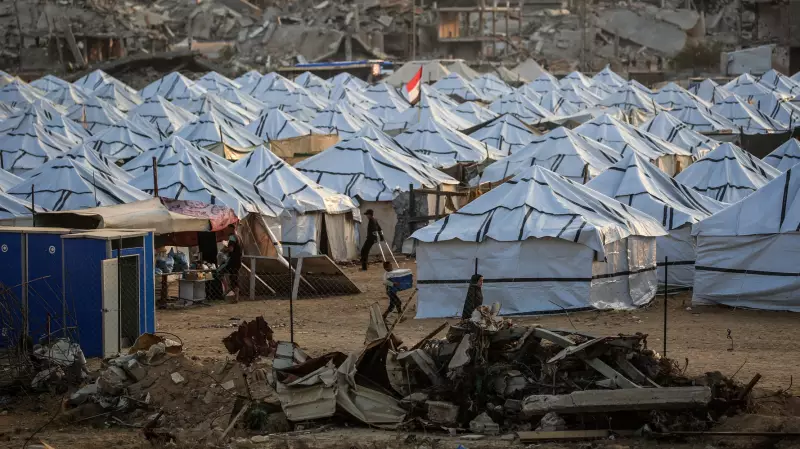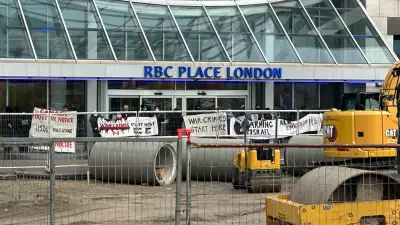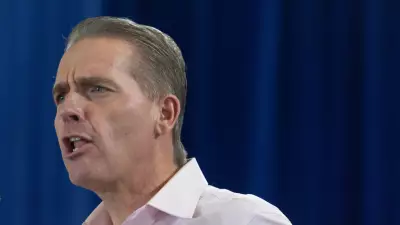
The Gaza Strip appears headed toward a de facto partition between Israeli-controlled territory and areas ruled by Hamas, with multiple sources indicating that efforts to advance former U.S. President Donald Trump's peace plan have effectively stalled.
Peace Plan Stalled Despite Ceasefire
Six European officials with direct knowledge of the implementation efforts confirmed to Reuters that the next phase of Trump's plan is effectively paralyzed. Reconstruction now appears likely to be limited exclusively to the Israel-controlled area, potentially creating years of separation between the two zones.
Under the first stage of the plan that took effect on October 10, the Israeli military currently controls 53% of the Mediterranean territory. This includes much of Gaza's farmland, Rafah in the south, sections of Gaza City, and other urban areas. Meanwhile, nearly all of Gaza's 2 million residents remain crammed into tent camps and the rubble of destroyed cities across the Hamas-controlled remainder of the territory.
Yellow Line Becomes De Facto Border
Israeli forces have placed large yellow cement blocks to demarcate what's known as the "yellow line" - the withdrawal boundary agreed upon under Trump's plan. The military is building infrastructure on their side of this dividing line, with satellite imagery revealing newly fortified outposts and fresh asphalt in areas like Shejaiya neighbourhood.
According to 18 sources, including six European officials and a former U.S. official familiar with negotiations, the yellow line appears set to become the de facto border indefinitely dividing Gaza unless the United States makes a major push to break the current impasse.
Israeli military spokesman Nadav Shoshani stated that soldiers remain positioned to prevent militants from crossing into Israel-controlled zones. "As soon as Hamas holds their part of the agreement we are ready to move forward," Shoshani said, emphasizing that Israel would withdraw further once Hamas meets conditions including disarmament and an international security force deploys.
Reconstruction Stalled by Political Impasse
The next stage of Trump's plan envisions Israel withdrawing further from the yellow line, establishing a transitional authority to govern Gaza, deploying a multinational security force, disarming Hamas, and beginning reconstruction. However, the plan contains no specific timelines or implementation mechanisms.
Complicating matters further, Hamas refuses to disarm, Israel rejects involvement by the Western-backed Palestinian Authority, and uncertainty persists over the multinational force. Ten diplomats revealed that governments remain hesitant to commit troops, with European and Arab nations particularly reluctant to participate if responsibilities extend beyond peacekeeping to direct confrontation with Hamas.
U.S. Vice President JD Vance and Trump's influential son-in-law Jared Kushner both suggested last month that reconstruction funds could begin flowing to the Israel-controlled area even without progressing to the next stage, creating model zones for some Gazans. These proposals suggest the fragmented reality risks becoming "locked into something much more longer term," according to Michael Wahid Hanna, U.S. program director of the International Crisis Group.
Humanitarian Crisis Deepens
The potential territorial breakup of Gaza would further setback Palestinian aspirations for an independent nation and worsen the humanitarian catastrophe. Reconstruction costs are estimated at $70 billion, but Gulf nations appear reluctant to fund rebuilding in Israeli-occupied areas without Palestinian Authority involvement and a path to statehood.
Hamas has reasserted itself in Palestinian areas of Gaza City in recent weeks, providing police security and civil workers who guard food stalls and clear paths through the devastated landscape. Hamas spokesperson Hazem Qassem in Gaza City stated that the group stands ready to hand over power to a Palestinian technocrat entity so reconstruction can begin. "All the regions of Gaza deserve reconstruction equally," he emphasized.
Meanwhile, Gaza City resident Salah Abu Amr, 62, expressed concerns about the human impact of division. "Are we all going to be able to move into that area? Or Israel will have a veto over the entry of some of us," he questioned. "Are they also going to divide the families between good people, bad people?"
As Jordanian Foreign Minister Ayman Safadi stated at this month's Manama security conference, "We cannot have a fragmentation of Gaza. Gaza is one, and Gaza is part of the occupied Palestinian territory." Without a major breakthrough, however, that fragmentation appears increasingly likely to define Gaza's future.





